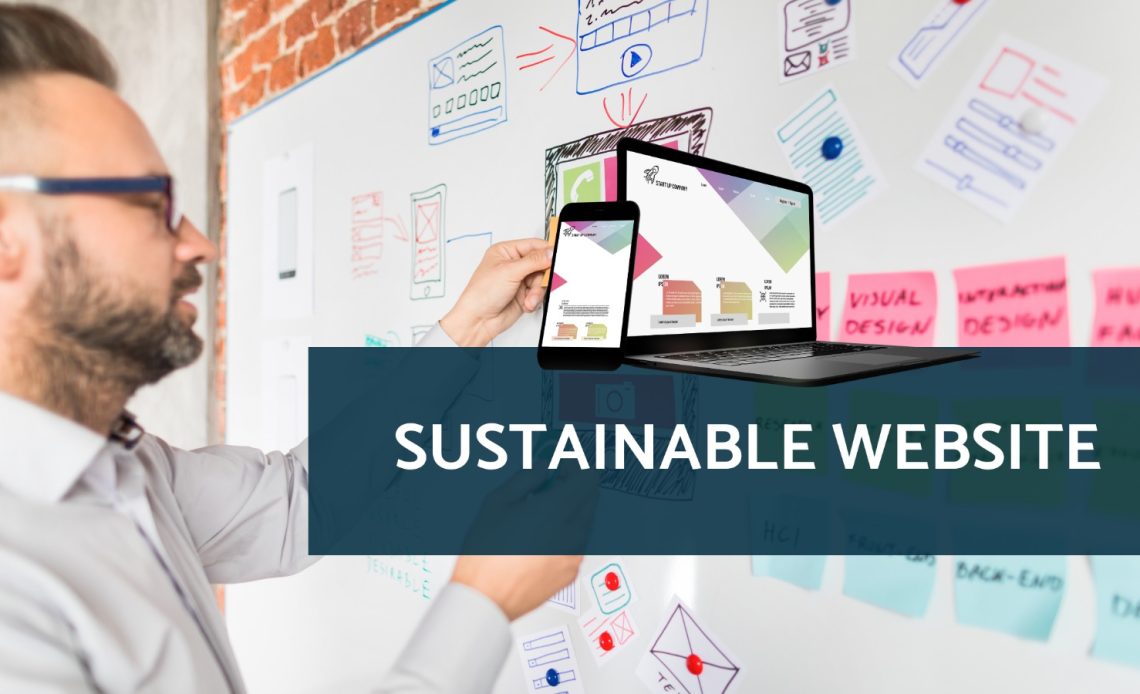
The idea of a sustainable website is becoming increasingly popular in a time when sustainability is not just a trendy term but also a necessity for businesses. Demand for sustainable web design has surged as companies aim to attract eco-conscious customers and lessen their environmental impact. However, what precisely is a sustainable website, and how can it help businesses grow in the cutthroat market of today? This post will discuss the fundamentals of sustainable web design and the real advantages it provides companies hoping to prosper in the contemporary market.
Understanding Sustainable Websites
The aim of designing and developing a sustainable website is to reduce its environmental impact as much as possible. This entails using eco-friendly hosting options, streamlining the website’s operation to use less energy, and designing a user interface that adheres to sustainable practices. Efficiency, waste reduction, and making well-considered decisions are the main priorities during the design and development phase.
Sustainable web design is rethinking how websites are created and maintained to make sure they contribute to a healthier planet, not just about reducing energy use. Businesses can significantly impact their overall sustainability goals by taking into account a website’s entire lifecycle, from design to deployment and beyond.
Key Principles of Sustainable Web Design
Several fundamental ideas must be taken into account when creating a sustainable website. The design and development process is guided by these principles, which guarantee that the end product is not only functional and user-centric but also environmentally friendly.
1. The Efficiency of Energy
Energy efficiency is one of a sustainable website’s most important features. Every time a website is accessed, energy is used; large images, videos, and intricate scripts are among the factors that increase energy consumption. Businesses can dramatically lower the energy consumption of their websites by optimizing these components, such as reducing JavaScript, compressing images, and using effective coding techniques.
To further lessen the environmental effect, select a hosting company that employs energy-efficient data centers or renewable energy sources. Making a website that works as well as possible while consuming the least amount of energy is the aim.
2. Design Minimalism
Sustainable web design frequently takes a minimalistic stance, emphasizing usability and simplicity. A website with a minimalist design uses less energy because it reduces superfluous elements, simplifies navigation, and speeds up load times.
Instead of compromising on aesthetics or user experience, minimalist design places a strong emphasis on purpose and clarity. Through the removal of unnecessary components, companies can design websites that are both aesthetically pleasing and long-lasting.
3. Enhanced User Interface
The user experience is another top priority for a sustainable website, making sure that users can quickly and easily find the information they need without having to do a lot of searching or navigating. Users spend less time on websites with intuitive, user-friendly designs, which lowers energy consumption.
Additionally, improved customer satisfaction and engagement result in better business outcomes from an optimized user experience. Sustainable design and user experience can work together to benefit businesses in the long run.
4. Eco-Friendly Content Administration
For a website to be sustainable, content management is essential. Maintaining a lean and effective website requires routinely auditing and optimizing content to eliminate redundant or out-of-date content. Using effective file formats, optimizing photos and videos, and making sure that all content is required and valuable to the user are further components of sustainable content management.
By using a content strategy that prioritizes quality over quantity, the website can stay interesting and relevant without adding to the amount of digital waste produced.
5. Eco-Friendly Web Hosting
An integral part of a sustainable website is green hosting. Green hosting companies lessen the carbon footprint of website hosting by powering their servers with renewable energy. Businesses can make sure that their websites are ecologically friendly and support more general sustainability goals by selecting a green hosting provider.
Web development companies can help companies choose hosting companies that support their sustainability goals, which will strengthen their resolve to have a more environmentally friendly online presence.
The Business Benefits of Sustainable Websites
Using sustainable web design techniques is advantageous for business expansion as well as the environment. Here are some ways that businesses can succeed in the modern market with sustainable websites.
1. Enhanced Brand Reputation
Customers are drawn to brands that show a commitment to sustainability as they grow more environmentally conscious. A company’s values can be expressed in a concrete form on a sustainable website, which tells potential clients that the enterprise takes environmental impact reduction seriously.
Businesses can stand out from rivals, draw in eco-aware clients, and improve their brand image by incorporating sustainability into their online presence.
2. Improved Website Performance
Faster, more effective websites are frequently the result of sustainable web design. Through the optimization of images, the reduction of bulky scripts, and the simplification of design components, companies can build websites that operate reliably and load quickly.
Search engine rankings are positively impacted by improved website performance, which also improves user experience. Search engines like Google favor faster websites, which improves their visibility and drives more traffic.
3. Cost Savings
Businesses can also save money by using sustainable websites. Businesses can minimize the resources needed to maintain the website and reduce hosting costs by minimizing the amount of data that needs to be processed and transmitted.
Furthermore, a well-thought-out, effective website frequently needs less upkeep and updates, which results in long-term savings. Purchasing sustainable web design is a wise financial move that will eventually pay off.
4. Adherence to Environmental Guidelines
Businesses may soon have to comply with more stringent regulations regarding their environmental impact as governments and regulatory bodies place a greater emphasis on sustainability. Businesses can stay ahead of regulatory changes and guarantee compliance with future environmental standards by implementing sustainable web design practices now.
Businesses that take a proactive approach to sustainability can establish themselves as leaders in their sector, which will enhance their market share and reputation.
5. Extended Business Adaptability
Long-term thinking is at the heart of sustainability, and companies that adopt sustainable practices will fare better in the long run. A website that is sustainable is an investment in a company’s longevity, guaranteeing its ability to adjust to shifting consumer tastes and market conditions.
Businesses can strengthen their resilience, lessen their environmental impact, and help ensure a more sustainable future for all by putting sustainability first.
How a Web Development Agency Can Help
It takes knowledge of both web design and sustainability principles to create a sustainable website. A seasoned web development company can offer the direction and technical know-how required to build a website that complements the sustainability objectives of your company.
Choose a web development company that is dedicated to eco-friendly practices and has experience with sustainable web design. In addition to providing insights into the newest trends and technologies in sustainable web development, the agency ought to be able to showcase a portfolio of environmentally friendly websites.
In summary
Sustainability is no longer just a fad in today’s business environment; it is essential to long-term success. A sustainable website offers real advantages for business expansion, such as improved performance, cost savings, and improved brand reputation, in addition to lessening its negative effects on the environment.
Through the adoption of sustainable web design principles and collaboration with an experienced web development agency, companies can design websites that not only benefit the environment but also foster expansion and prosperity in the digital era. Those who incorporate sustainability into their online presence now will be in a strong position to prosper later on as the demand for it grows.



